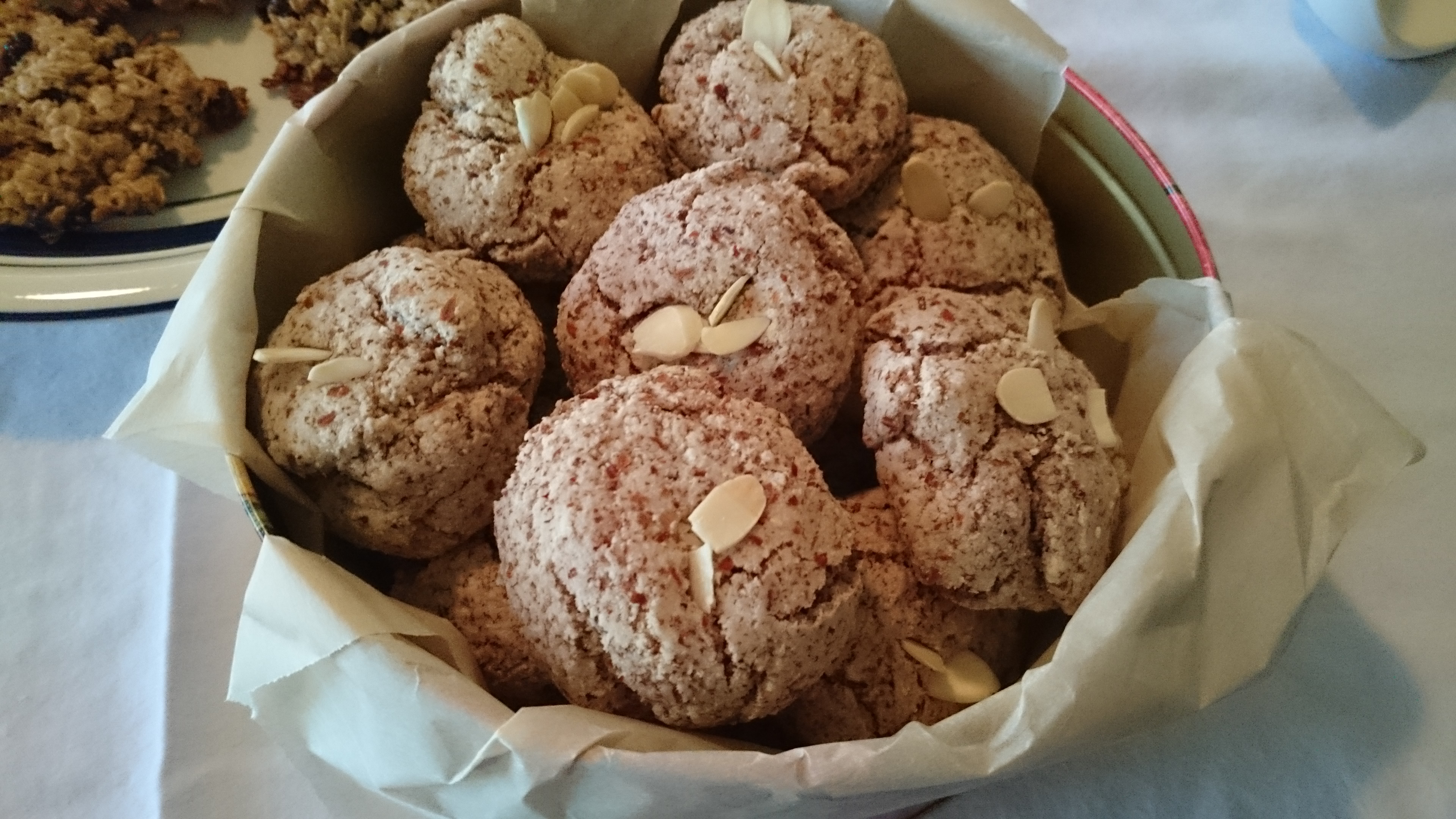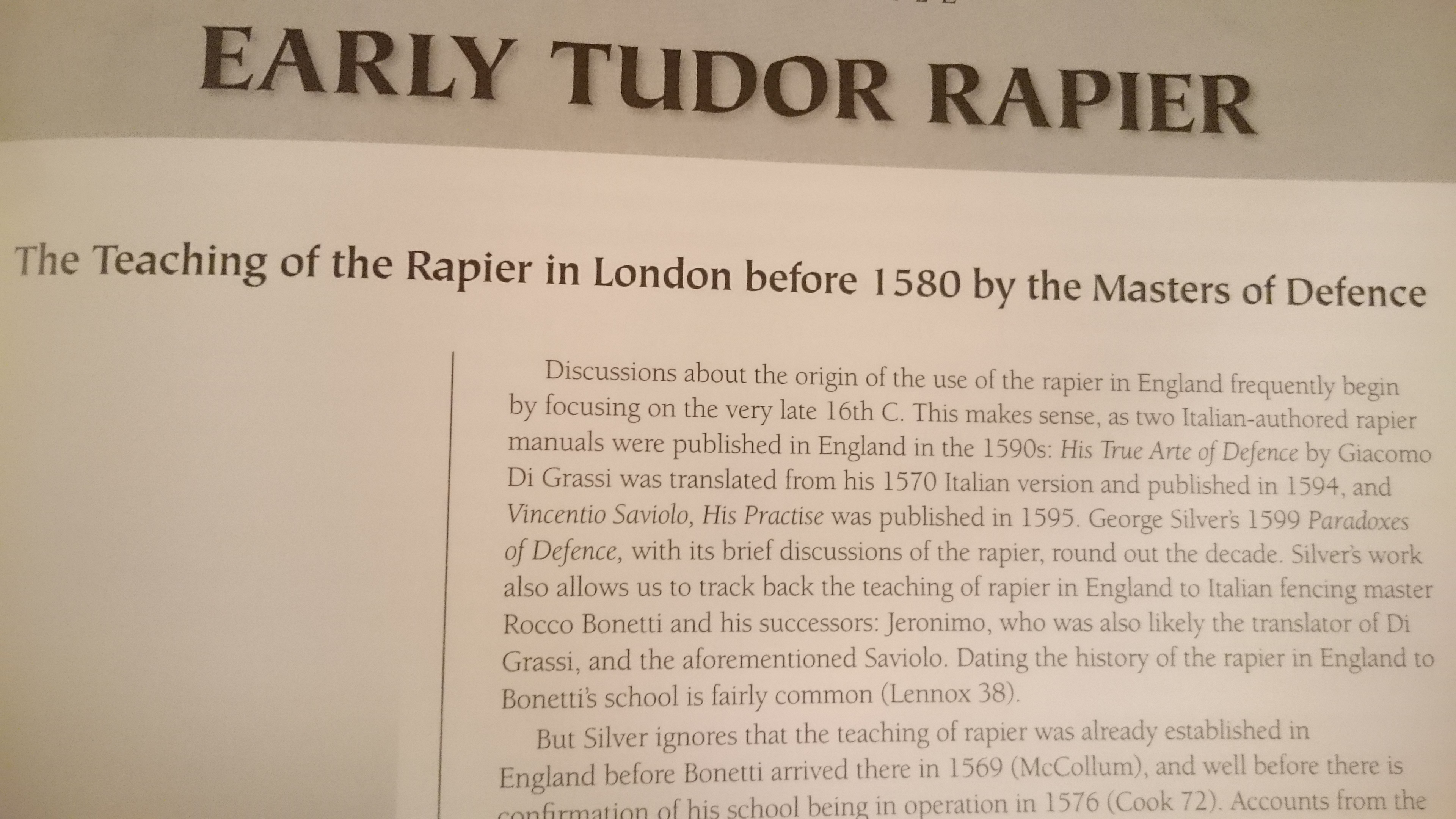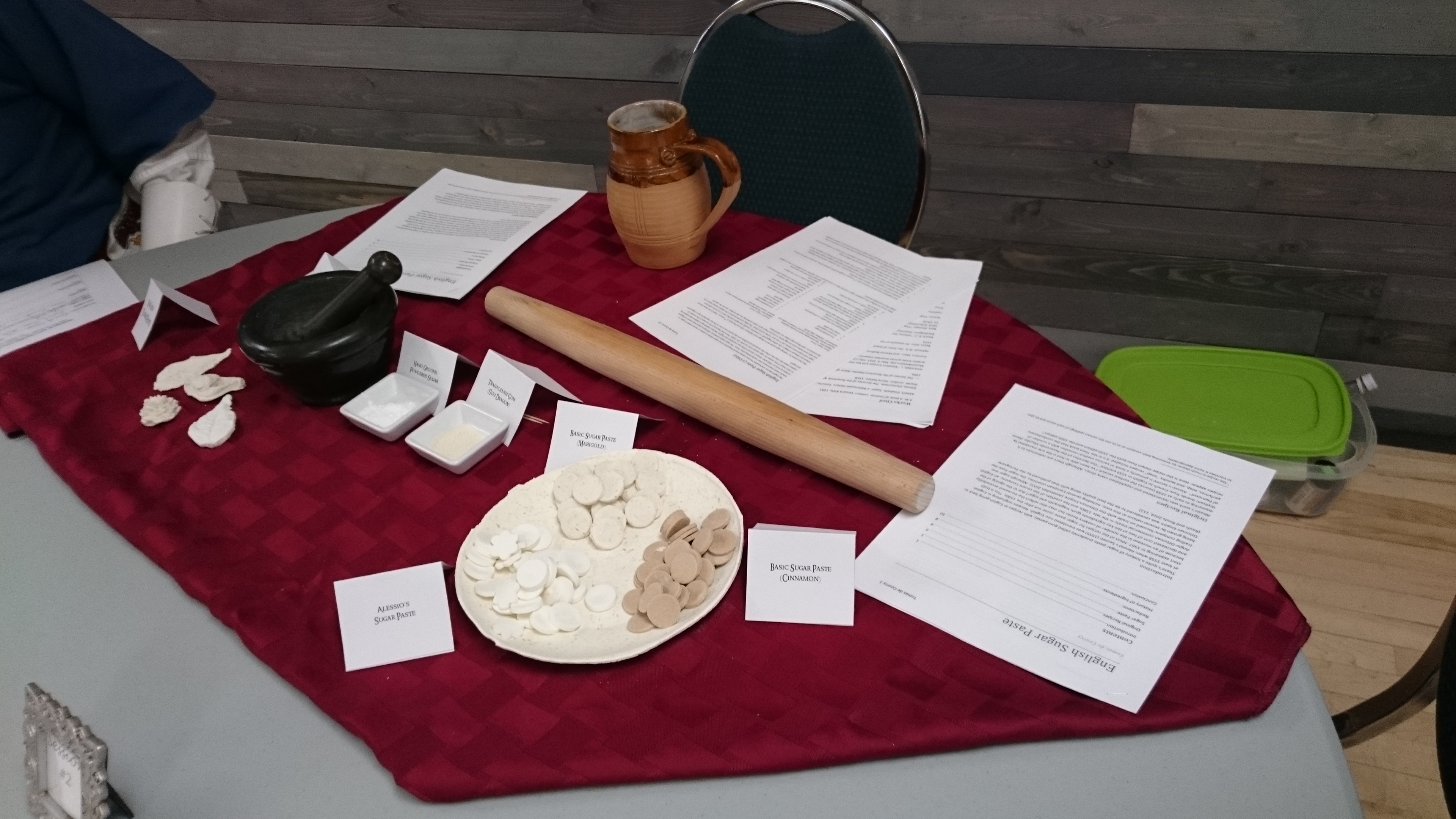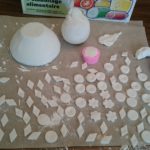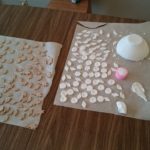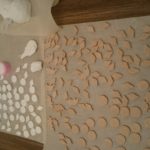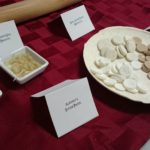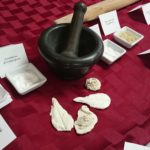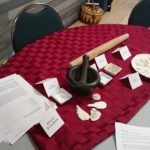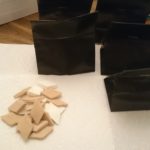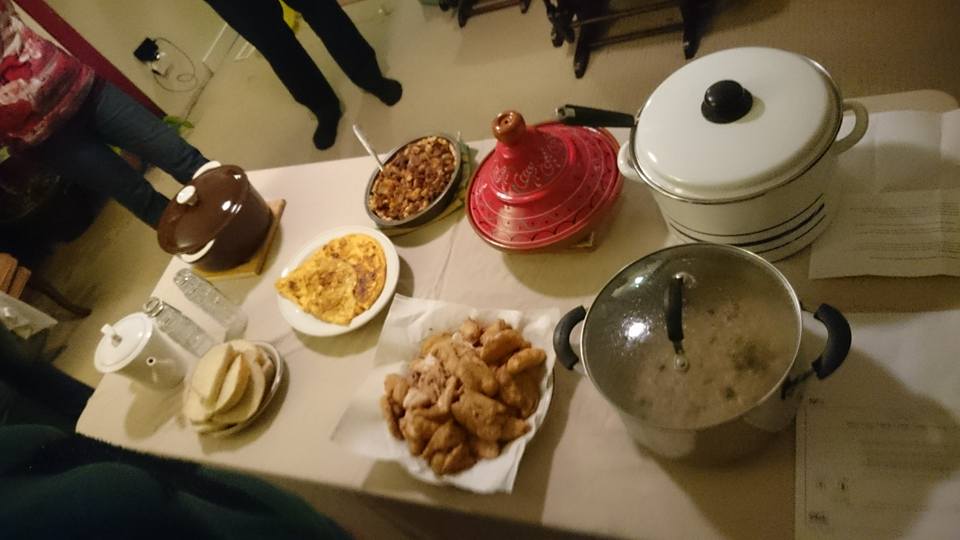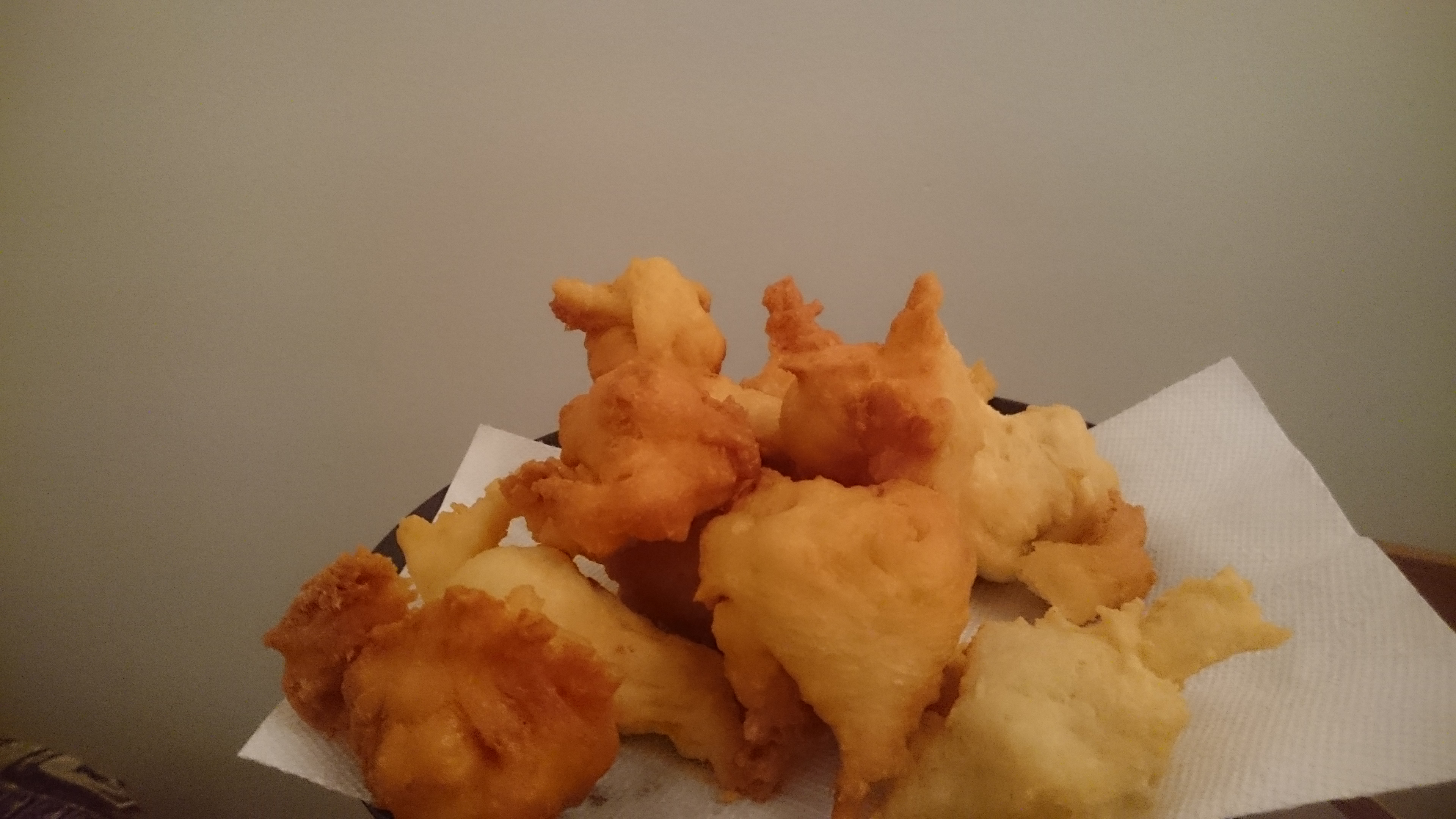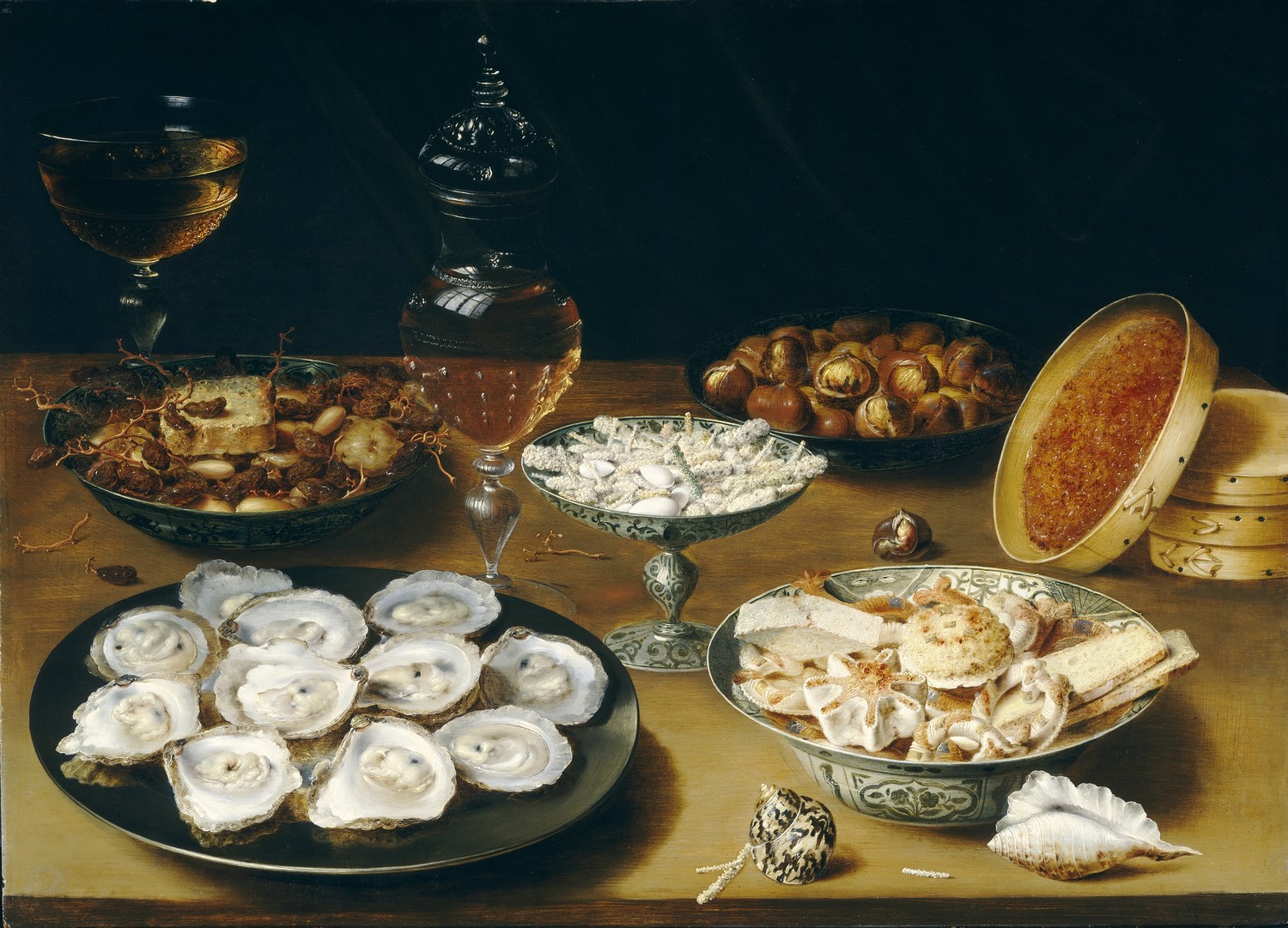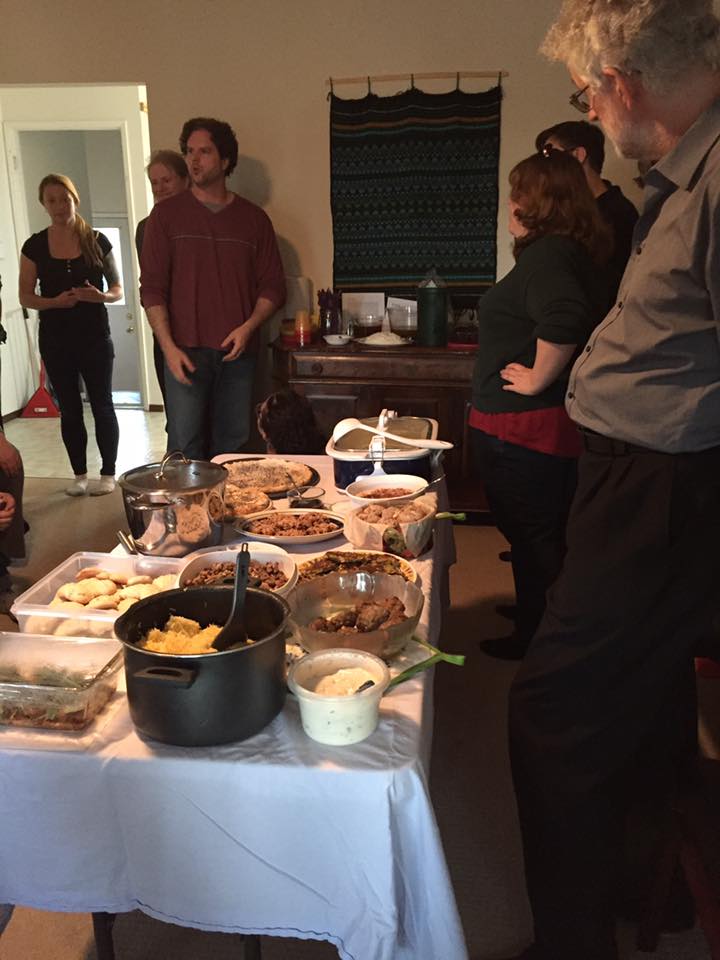A&S
Qurabiya
46.
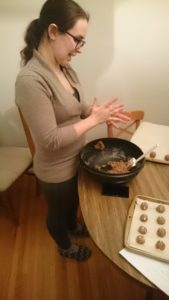
Her Ladyship Kayleigh rolling the cookies
Qurabiya (sometimes spelled Ghorabiye) is a type of almond cookie, likely originating in Persia, which had spread to the Ottoman court by at least the 15th century. I haven’t been able to find any remaining period Qurabiya recipes, so instead this is being built on a lot of conjecture and various “traditional” and modern recipes. From what I can tell from a few different sources it was a cookie made from egg white, almond, sugar, and rosewater. Modernly different fats and oils as well as other nuts are added to the recipe. Every recipe is different and all have various flavourings. A modern version that seems quite similar to the references I’ve found is this one for Iranian Almond Cookies. The cookie spread west early and several types of cookie (such as in Greece) have names that are very similar. But what is interesting is to compare early French macarons:
